
PT-26 Trainer - $$4.50
The Fairchild PT-19 was a USA Fairchild Aircraft monoplane primary trainer aircraft that served with the United States Army Air Forces, RAF and RCAF during World War II. The final variant was the PT-26, which used the L-440-7 engine. The Canadian-built versions of these were designated the Cornell.
Fairchild PT-26 Trainer
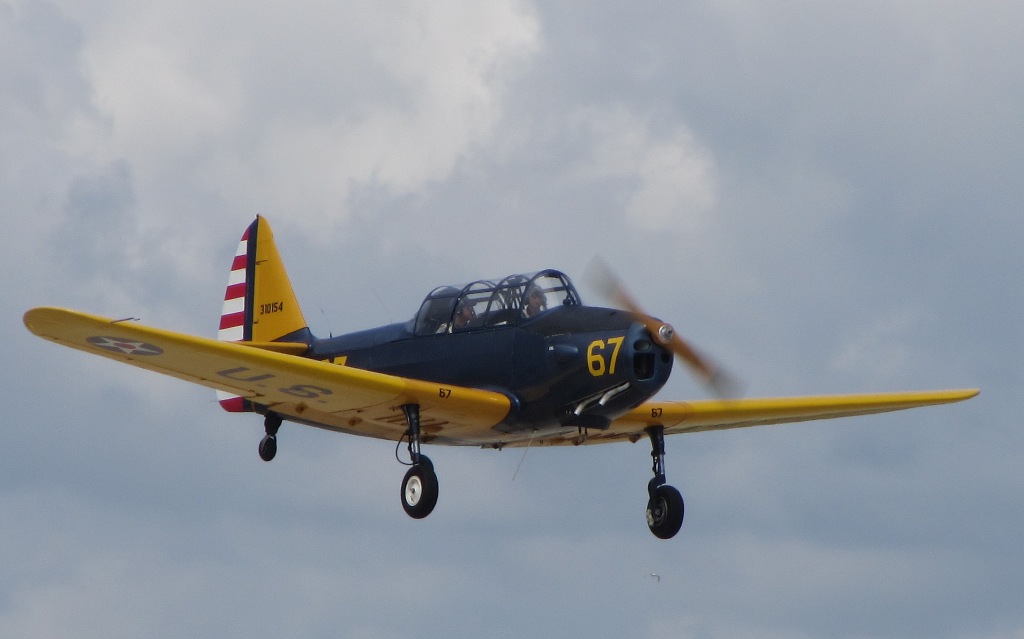
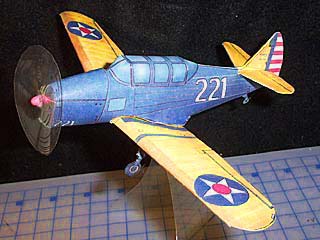
Three versions produced and this was the latest the Fairchild PT-26. The cost and simplicity of the various PTs made them popular on the surplus market after the war and many are still used by private owners. This model is available in bright yellow as the Canadian 'Cornell'.
Although Army policy tended eventually to favor the biplane for primary pilot training programs in World War 11, the Fairchild low-wing trainers were built in almost as large a number as the Boeing-Stearman biplanes, and were widely used in U.S. training schools.
Having been developed by Fairchild as the M-62, this design was first purchased by the Army in 1940 as the rapid expansion of the Air Corps got under way, and was designated PT-19.
Fairchild PT-19/PT-26

Although Army policy tended eventually to favor the biplane for primary pilot training programs in World War 11, the Fairchild low-wing trainers were built in almost as large a number as the Boeing-Stearman biplanes, and were widely used in U.S. training schools.
Having been developed by Fairchild as the M-62, this design was first purchased by the Army in 1940 as the rapid expansion of the Air Corps got under way, and was designated PT-19. Powered by the 175 h.p. Ranger L-440-1 engine, the PT-19 had tandem seating in open cockpits and a gross weight of 2,550 lb. Production totalled 270.
Massive orders for the Fairchild trainer in 1941 led to a doubling of the company's production facilities, but the demand exceeded capacity at Hagerstown and additional sources were provided by production lines put down by Aeronca and St. Louis. All three built the PT.19A version, with the 200 h.p. L-440-3 engine and detail improvements. Production totals were 3,182 by Fairchild.477 by Acronca and 44by St. Louis.
Introduction of equipment for blind-flying instruction, including a hood for the front cockpit, changed the designation to PT-19R. Fairchild built 774 of these, and Aeronca produced a further 143.
With production of the Ranger engine lagging behind airframe output in 1942, Fairchild converted a PT-19A (41-15172) to have an uncowled Continental R-670-5 engine; this prototype was designated XPT-23, and production PT-23s were built by Fairchild (two, with R-670-4 engines): Aeronca (375 with the -4 engine); Howard (199, with -4 or-S engine); St. Louis (200, with -Il engine) and Fleet in Canada (93, with -4 engine). The PT-23A had blind-flying provision; Howard built 150 and St. Louis 106.
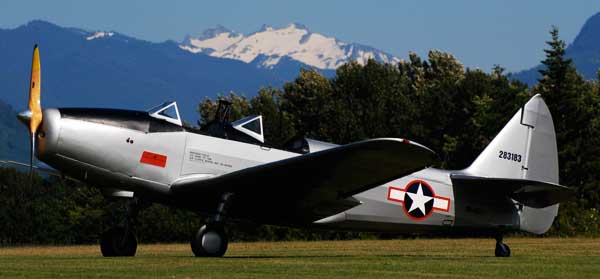
For use in the Commonwealth Air Training Scheme in Canada, a version of PT-19A was fitted with a canopy over the two cockpits and re-designated PT-26. Fairchild built 670 for Lend-Lease to the R.C.A.F., and the Army paid for another 807 PT-26A and 250 FT-26B built by Fleet in Canada.
ln apparent contradiction of the USAACs preference for biplane primary trainers, the PT-19 series was built in very large numbers The aeroplane was developed as the M-62, and was ordered in 1940 as the PT-19 with open cockpits and the 130.5-kW (175-hp) Ranger L-440-1 incline. These 270 aircraft proved to be only the beginning of a veritable flood, for next came 3,703 PT-l9As with minor improvements and the 149-kW (1200-hp) L-440-3 engine, and 917 PT-19B blind-flying train ers with a hooded front cockpit.
With airframe construction outstripping Ranger supplies the 869 PT-23s switched to the Continental R-670 radial. The PT-23A was the blind-flying equivalent of which 261 were built for Canadian operation Fairchild developed the Ranger-engined PT-26 with a long glasshouse canopy over the two cockpits, and 1,727 of this type were built in PT-26, PT-26A and PT-26B variants named Cornell in Canada.
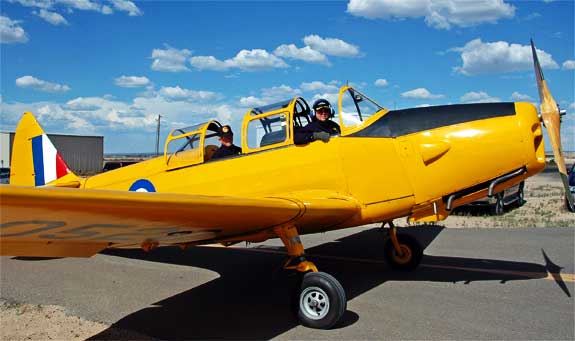
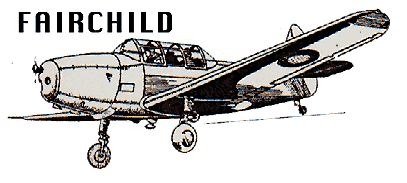
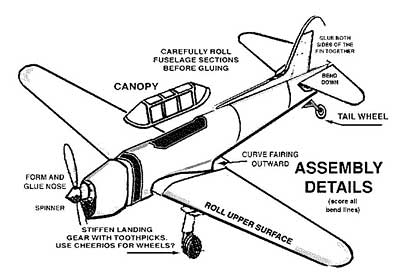
Specifications for the PT-19/26
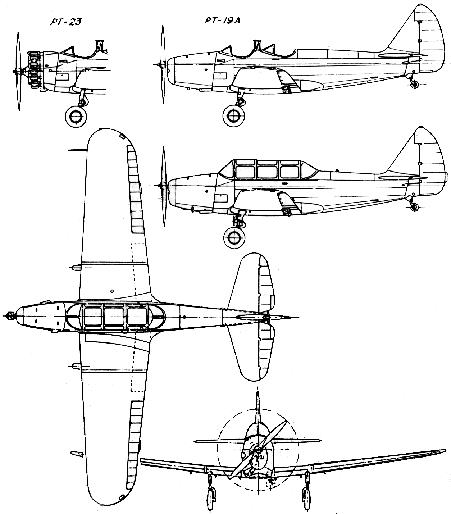 |
Crew: two, student and instructor Length: 28 ft Wingspan: 36 ft Height: 10 ft 6 in Loaded weight: 2,545 lb Powerplant: 1× Fairchild Ranger L-440-3, 200 hp Performance Maximum speed: 132 mph Range: 430 mi Service ceiling: 15,300 ft |
New version - (October 2014)
Fleet-built Fairchild PT-26 Cornell
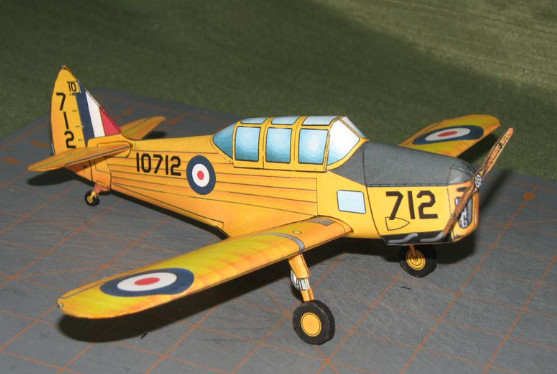
Fleet Aircraft Company of Canada built 1,642 Fairchild PT-26 trainers under license as part of the supply of aircraft used in the British Commonwealth Air Training Plan. At the Plan’s high point in late 1943, more than 100,000 administrative personnel operated 107 schools and 184 other support units at 231 locations across Canada.
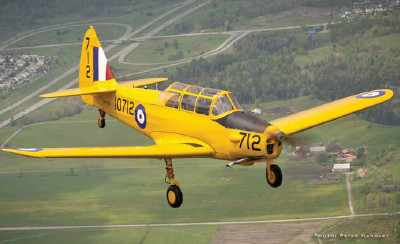
|
Cornell serial number FC213 made its first flight on June 29, 1943 and was then taken into the Royal Canadian Air Force as 10712 and assigned to be part of the elementary flight training activities for pilots being trained on the prairies of Saskatchewan. |
|
One of those elementary flying instructors
was Royal Air Force Flight Lieutenant Archie
Pennie. F/L Pennie instructed RAF pilots on
Cornells at the No. 34 Elementary Flight
Training School in Assiniboia, Saskatchewan. |
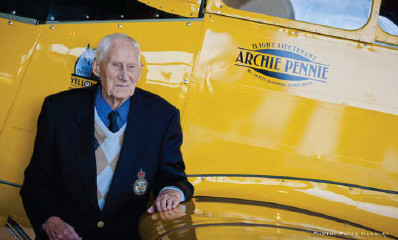
|
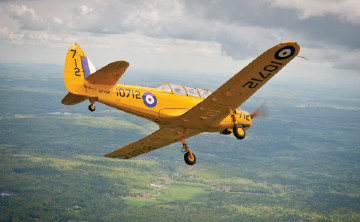
|
Cornell 10712 was one of five bought from war surplus by Paul Durand and his son Bob. The Durands paid between $150 and $300 for each aircraft that day. After a few more owners in Quebec and New York, 10712 was acquired by Vintage Wings of Canada and restored to original colours and flying condition. |
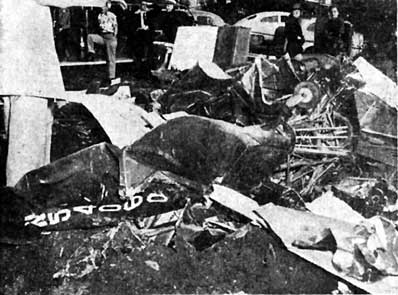 |
| Airplane crash, Evergreen district. One pilot was killed and another parachuted to safety after a wooden wing sheared from a WWII Fairchild PT-23 training plane stunting 1800 feet above the Evergreen district, 1-1/2 miles east of Hillview Golf Course. The plane crashed into a farmyard, narrowly missing several playing children. Image taken from San Jose Mercury newspaper clippings, 8 Feb 1956. |


